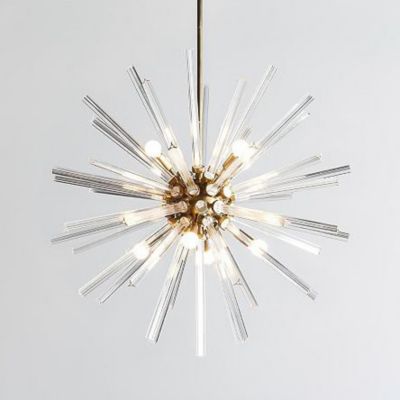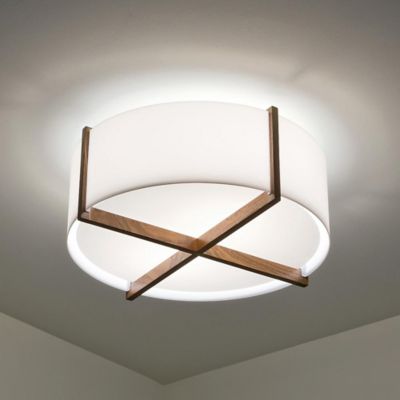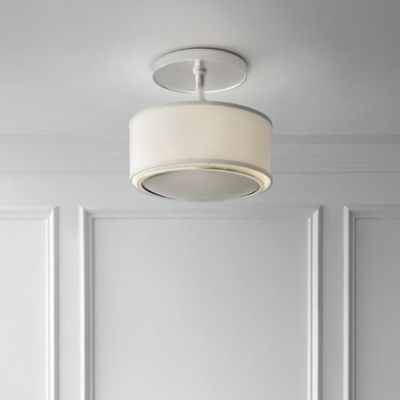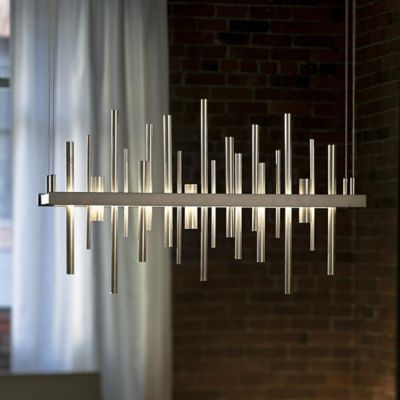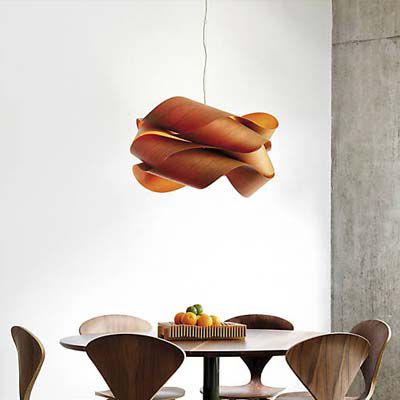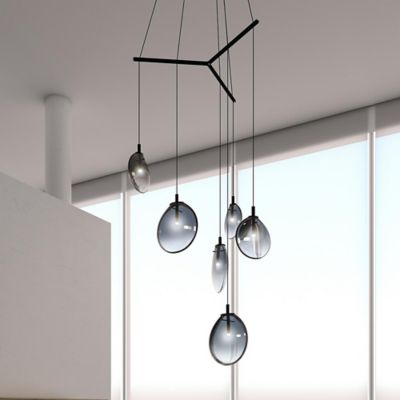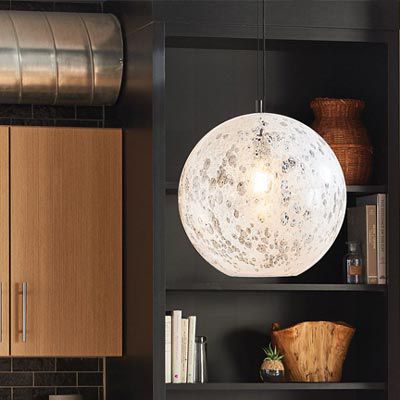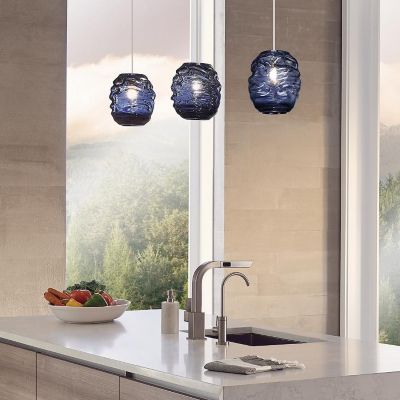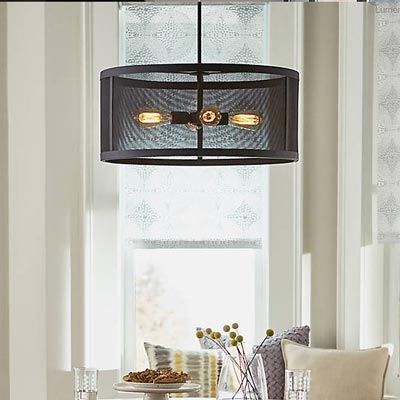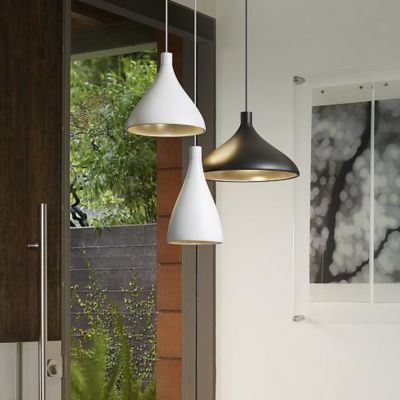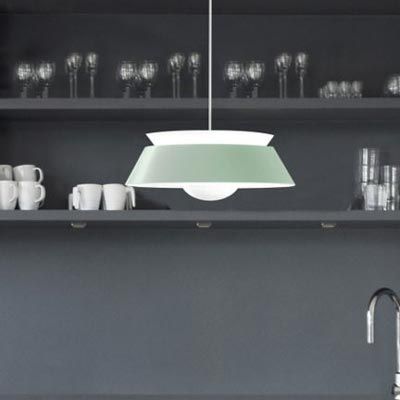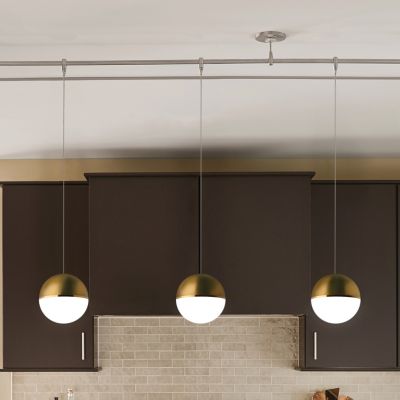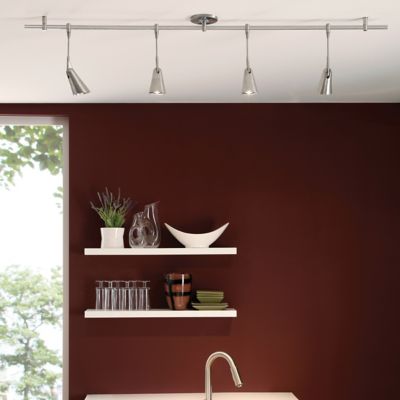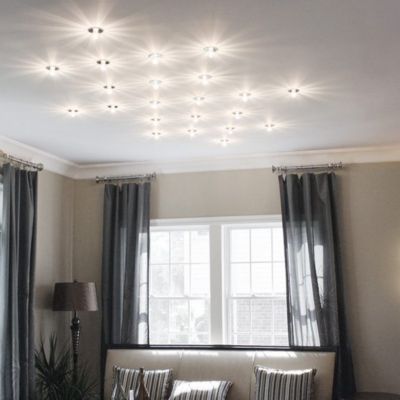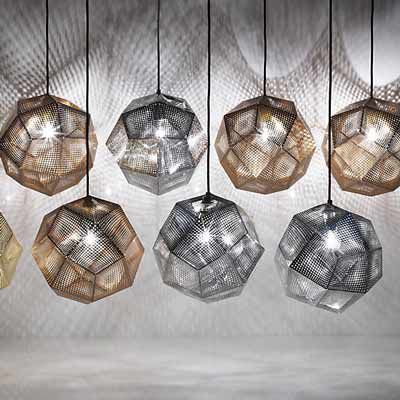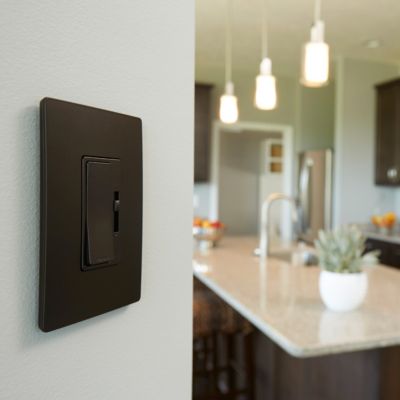Ceiling Lights
Shop Ceiling Lights by Category
View All Ceiling Lights
Learn More About Ceiling Lights |
Illuminate Any Room with Ceiling Lights
Today’s ceiling lights come in a versatile array of options suited to both indoor and outdoor spaces, with options ranging from sleek single-light pendants to bold industrial-style flush mounts. Our selection includes iconic lighting manufacturers and designers like Jonathan Adler, Kichler and Artemide. Choose from understated flush mounts that provide soft ambient lighting or statement-making LED fixtures with ultramodern designs. From chandeliers and suspensions by Visual Comfort & Co. to elegant ceiling lights by Feiss Lighting, there is a wide range of styles and types of lighting to choose from.
Understanding Different Ceiling Light Fixture Types
- Chandeliers: These decorative fixtures are meant to be displayed over dining tables and grand entryways. Chandeliers are available in linear (rectangular) designs, crystal designs, Sputnik-style and more.
- Pendant Lighting: Similar in design to chandeliers, pendant lights hang lower from the ceiling and can be used independently or in clusters.
- Flush Mounts and Semi-Flush Mounts: Flush or semi-flush ceiling lights are best for rooms with low hanging ceilings where a hanging fixture may not work.
- Track & Monorail Lighting: A decidedly architectural look, these fixtures use directional spotlights or a string of mini pendants to offer focused illumination.
- Recessed Lighting: Recessed lights install directly inside of the ceiling and provide overhead lighting.
Ceiling Light Installation
Thoroughly measure the area where you are installing a ceiling light. The diameter and height of the light are the two most important dimensions, and the suspension of the fixture is dependent on where it is installed. Check out our guide on how to choose the right ceiling light size to learn more. Make a note of your ceiling light parts and accessories and the existing electrical wiring you'll be working with. We recommend consulting with your electrician to discuss any questions or concerns you may have before installing a new light.
Other Considerations
Not all ceiling lights are suitable for all spaces. For example, sloped ceilings are not ideal for some flush-mount lighting. Pendant lighting, recessed lights and chandeliers are a better option. Additionally, note whether your light is suitable for wet or damp areas, like bathrooms or patios. Whether you’re searching for kitchen lighting that makes a statement or looking to swap out an old fixture in your dining room for a modern ceiling lamp, the possibilities are virtually endless.
Frequently Asked Questions about Ceiling Lights:
What are the different types of ceiling lighting fixtures available?
Ceiling lights come in many forms such as chandeliers, flush mounts, semi-flush mounts, linear suspensions and pendants.
How do I choose the right ceiling lighting for each room in my home?
To choose the right ceiling lighting fixture, consider the needs of the room. Identify how much natural light is already present in the room and where it comes from. Also consider the fixtures already in the room and the layering of the light, to determine how much light the ceiling light will contribute. Also determine if the light desired is a direct light or an accent light. Style, size and placement of new ceiling lights also all contribute to the fixture blending in or standing out in the room. Proper research is always recommended as there are many aspects to consider.
How can I use ceiling lighting to create different moods or ambiances in a room?
Ceiling lighting with warm-colored bulbs or dimmers can shape the atmosphere of a room into a relaxed and cozy destination. Pendants and flush mounts provide different displays of light as well, adding to rooms in their own way. Warm lighting either with bulbs or dimmers is an effective way to immediately establish a comforting feel in the room.
What are some energy-efficient options for ceiling lighting?
The most popular option for energy-efficient ceiling lighting is the use of LED bulbs. LEDs use far less energy consumption than traditional incandescent bulbs while saving on power costs and lasting much longer. Motion sensor lights, solar capabilities and integration with smart technology are also effective ways to be energy efficient.
What are some creative ideas for using ceiling lighting as a design element in a room?
Ceiling lighting as a design element allows for creative presentations in the room. Installing a statement-making chandelier is an easy way to elevate the appeal of the room. Clusters of pendants can also bring a dazzling display to the room. Using cove lighting can uplift a room as well while establishing depth with a warm glow.
How do I control or dim ceiling lighting effectively?
Dimmer switches are an easy way to control ceiling lighting, although remote controls and smart technology are also effective options. With smart technology, the controls remain on a smart phone and usually include the ability to schedule a time for the lights to come on, turn off or dim.
What are some ceiling lighting trends or popular styles for modern interiors?
Ceiling lighting trends often include embracing technology. The use of LEDs for their energy-efficiency and longer lifespans are important aspects of the sustainability movement. The adoption of smart technology is also a common trend as smart technology becomes more ubiquitous and integrated into each aspect of home life. Another common trend is the revival of past styles that until recently fell out of favor such as Art Deco.
Are there any considerations for ceiling lighting in rooms with low ceilings or sloped ceilings?
Rooms with low ceilings can take advantage of semi-flush or flush mounts to bring new light to the area while taking up minimal space. Recessed lighting is also an ideal choice as the entire fixture remains within the ceiling. Many pendant lights can also be adapted to sloped ceilings, allowing for the same look as non-sloped ceiling.
How do I coordinate the style of ceiling lighting fixtures with the overall decor of the room?
To coordinate a new ceiling light with the rest of the room, look to what is already working in the room, including current light fixtures. A new fixture should match the current look established in the room in order to achieve a sense of flow and cohesion, although fixtures that do not match can also be used to make a statement as they stand out in the room.


